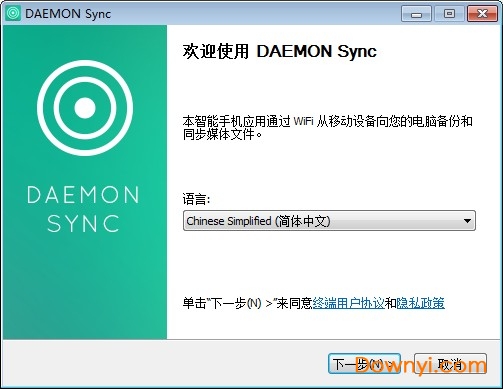
In that case it's useful to have the backup be Heartbeat Backup through the MGMT port, since the Heartbeat function sends out ICMP probes and these are processed by the system kernel, and not the ha_agent process. The reason for HA1 link failure is not limited to physical problems, it can also happen if the ha_agent process is busy and can't process HA1 functions. Split brain conditions can be prevented by configuring an HA1 Backup link and/or enabling Heartbeat Backup. Each HA member will assume the other member is in a non-functional state and take over as the Active (A/P) or Active-Primary (A/A).

Split brain conditions occur when HA members can no longer communicate with each other to exchange HA monitoring information. If the HA1 Link fails and there is no HA1 Backup nor Heartbeat Backup configured, configuration synchronization will fail and a split brain condition will be created. I did a bit of research on it, and it said it does it when one PA see a firewall that the other doesn't? But both are setup exactly the same, thoguhts? SATD daemon sync all gateway infos to HA peer no longer needed. KEYMGR sync all IPSec SA to HA peer no longer needed. RASMGR daemon sync all user info to HA peer no longer needed. HA Group 1: Control link running on HA1 connection HA Group 1: Staying in Active state after split-brain recovery (split-brain duration: 1s) HA Group 1: Anti-Virus version does not match
Daemon sync me software#
HA Group 1: Global Protect Client Software version does not match HA Group 1: Application Content version does not match HA Group 1: Threat Content version does not match HA Group 1: Anti-Virus version now matches HA Group 1: Application Content version now matches HA Group 1: Global Protect Client Software version now matches HA Group 1: Threat Content version now matches HA Group 1: Completed session synchronization with peer SATD daemon sync all gateway infos to HA peer started. KEYMGR sync all IPSec SA to HA peer started.

RASMGR daemon sync all user info to HA peer started. HA Group 1: Starting session synchronization with peerįIB HA sync started when peer device becomes passive. RASMGR daemon sync all user info to HA peer exit. KEYMGR sync all IPSec SA to HA peer exit. however I have recently been receiving Split-Brain HA1 Group down alerts, they don't seem to be affecting production flow thank goodness, but is alarming non-the-less. With that out of the way, I wanted to say I recently got a Device RMA'd and the process went amazingly smooth, and I actually was able to completed a HA peer PA-500 in less time then it took my provider to get my a digital key for some software!Įverything seemed to go very well. Synchronized.I want to start off saying I love Palo Alto's, they are AMAZING!

To automate this process, this tutorial includes the check_clocks utility tool to verify whether Linux PTP daemons (ptp4lĪnd phc2sys) have been properly configured and the clocks have been For more information about the adjtimex() system call, see Propagated to the kernel, read this offset value using the adjtimex() To verify the TAI offset set by the pmc command above has been correctly Than 100 ns, the System clock is synchronized. If phc2sys consistently reports offset lower The offset information reported by phc2sys shows the time offset between Phc2sys : CLOCK_REALTIME phc offset - 372582 s0 freq + 246 delay 6649 phc2sys : CLOCK_REALTIME phc offset - 372832 s1 freq - 4 delay 6673 phc2sys : CLOCK_REALTIME phc offset 68 s2 freq + 64 delay 6640 phc2sys : CLOCK_REALTIME phc offset - 20 s2 freq - 3 delay 6687 phc2sys : CLOCK_REALTIME phc offset 47 s2 freq + 58 delay 6619 phc2sys : CLOCK_REALTIME phc offset - 40 s2 freq - 15 delay 6680 By following this tutorial, the reader will be able to
Daemon sync me driver#
It is hardware-agnostic and applies to any 802.1AS-capable NIC with properĭevice driver support. pmc: utility tool to configure ptp4l in run-time.Īlthough this tutorial was tested with an Intel(R) Ethernet Controller I210 NIC,.phc2sys: daemon that synchronizes the PHC and the System clock.ptp4l: daemon that synchronizes the PTP Hardware Clock (PHC) from the NIC.Linux PTP provides some tools to carry out time It supports several profiles including gPTPĪnd AVNU automotive profile. In the Linux* ecosystem, Linux PTP is the Provides clocking information to all other nodes in the gPTP domain. Or bridges) and is determined by the Best Master Clock Algorithm (BMCA). Role which can be played by any node in the gPTP domain (such as end-stations gPTP also introduces the Grand Master (GM) gPTP consists of simplifications and constraints to PTP to optimize it gPTP is a profile from IEEE 1588, also known as Precision Time Protocol

Specified by IEEE 802.1AS, also known as Generalized Precision Time Protocol Time synchronization is one of the core functionalities of TSN, and it is


 0 kommentar(er)
0 kommentar(er)
